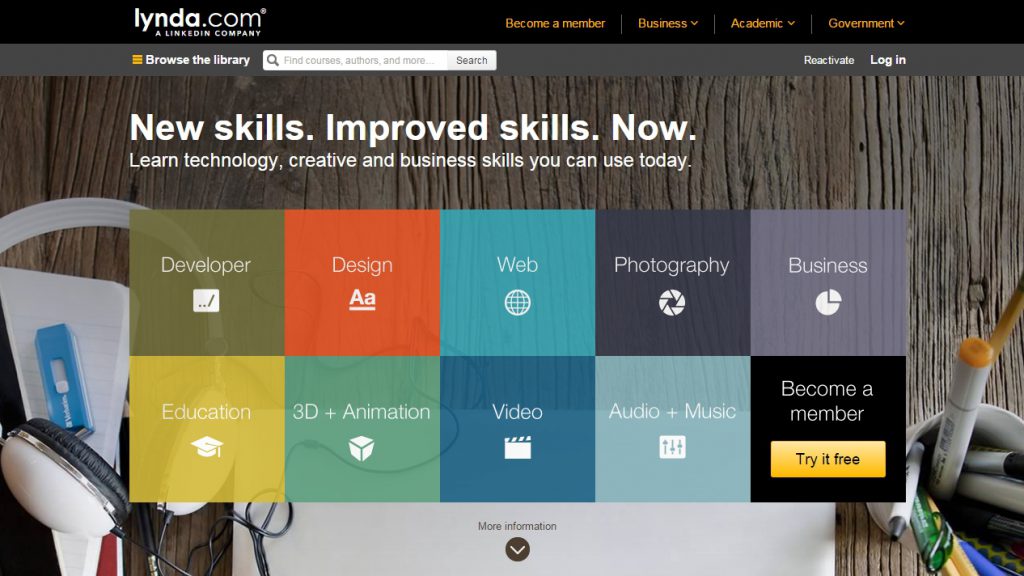What Associations Should Know About LinkedIn’s Acquisition of lynda.com

In April, LinkedIn announced the purchase of the online learning company lynda.com for approximately $1.5 billion. Why does that matter for associations? As LinkedIn CEO Jeff Weiner mentioned in a company press release,
“Both companies seek to help professionals be better at what they do. lynda.com’s … content helps empower people to develop the skills needed to accelerate their careers. When integrated with the hundreds of millions of members and millions of jobs on LinkedIn, lynda.com can change the way in which people connect to opportunity.”
Help professionals be better at what they do; help people accelerate their careers by integrating members, jobs and educational content. In other words, the very things associations have been doing for decades.
This is not meant to be another “end of associations” article, but associations should pay very close attention to LinkedIn and other online communities for professionals. If you think of these sites as just social networking platforms where your members participate in discussion forums, then you aren’t looking closely enough.
Associations offer more engagement, events, certifications, and other trusted resources that LinkedIn can’t match.
Lynda provides access to a huge library for biz, tech & creative skills: much of the same content associates give members.
With acquisition of lynda, LinkedIn takes a step closer to providing services already provided by associations.
State of LinkedIn
Here are a few ways LinkedIn positions itself:
- “LinkedIn connects the world’s professionals to make them more productive and successful and transforms the ways companies hire, market and sell.
- “LinkedIn is the largest professional network on the Internet.”
- “We seek to make the world’s professional knowledge available on LinkedIn.”
- “As we continue to add jobs on LinkedIn, we grow closer to realizing our vision of having every job in the world on LinkedIn.”
- “Our vision is to create economic opportunity for every member of the global workforce.”
And here’s how LinkedIn backs up those claims:
- 300 million members worldwide and growing. LinkedIn only had 1.7 million members when it launched its job board in 2005.
- Nearly 70 percent of LinkedIn’s members are outside the U.S., with members in more than 200
- 50,000 content posts from users per week via LinkedIn Groups and other publishing tools.
- 3 million active job listings.
- 2014 revenues were $2.2million, up 45 percent from 2013.
- LinkedIn’s revenue comes from three main sources:
- Talent solutions (i.e., job board) – 47 percent of Q4 2014 revenue.
- Marketing solutions (i.e., advertising) – 24 percent of Q4 2014 revenue.
- Premium subscriptions (i.e., paid dues) – 19 percent of Q4 2014 revenue.
LinkedIn is projecting nearly 3 billion in revenue for 2015, presumably in large measure due to the lynda.com acquisition.
Impact on association job boards
About seven or eight years ago, associations that operated job boards for their industry or profession started to feel the heat from the successful growth of LinkedIn’s job board platform. Here at Boxwood, we received a lot of questions from folks about what the future might hold for association job boards given LinkedIn’s prominence. LinkedIn has always been more of a threat to associations than other commercial job boards because its networking platform attracts a lot of passive candidates – e.g., individuals who don’t consider themselves in an active job search, but might make a move for the right opportunity. Employers won’t find these passive candidates on sites such as Monster, CareerBuilder and other commercial job boards because those sites only attract active job seekers. Until LinkedIn came along, associations were unique in their ability to help employers reach these targeted audiences of highly desirable, industry/profession-specific, passive candidates.
But when LinkedIn moved into the job board space, although they did have an audience of passive candidates, they couldn’t match associations for engagement level, networking opportunities, education, certification, and other programs and services that associations offered their members. That meant associations had a tremendous advantage over LinkedIn because of the higher level of engagement and value associations offered members and the trustworthy nature of their offerings.

Enter lynda.com.
lynda.com is an online learning company founded in 1995 and provides subscription access to a library of more than 3,500 courses and 144,000 video tutorials for business, technology, and creative skills taught by industry experts in a number of different languages. It has over 500 employees worldwide, with offices across the U.S., U.K., Austria and Australia, with its headquarters in California.
In other words, with the acquisition of lynda.com, LinkedIn took a really big step closer to associations. LinkedIn’s new online learning offerings are broadly focused while associations are highly specific in their niches, and LinkedIn still doesn’t have content that competes with every association, nor does it offer in person networking events, provide certifications, etc. But, before April of this year, it didn’t have any online learning offerings. Before January 2005, it didn’t have a job board, and before December 2002, it didn’t even exist. In other words, it’s quite possible that LinkedIn could have its eye on other association-like programs and services in the future. Given their size and resources, it’s prudent for associations to pay attention to how LinkedIn evolves and – potentially – make changes to how their programs are integrated and/or executed in order to ensure that industry professionals looking for education, networking, and career opportunities continue to make associations their first choice for those resources.
Conclusion
What can associations do to ensure they continue to be the best source of networking, content, and jobs for their industry’s professionals? We’ll be talking more about that in a future article, and we are planning a webinar after ASAE’s annual meeting. In the meantime, log in to your LinkedIn account and take a closer look at what your members and prospects are using on a regular basis.
Carrie McIntyre is the senior director for new business development at Boxwood Career Solutions. Carrie joined Boxwood in 1999 after working in membership and marketing for several D.C.-area associations. She has helped associations of all sizes implement best practices that turn their job boards into full-featured career centers that create even stronger strategic value for associations.

